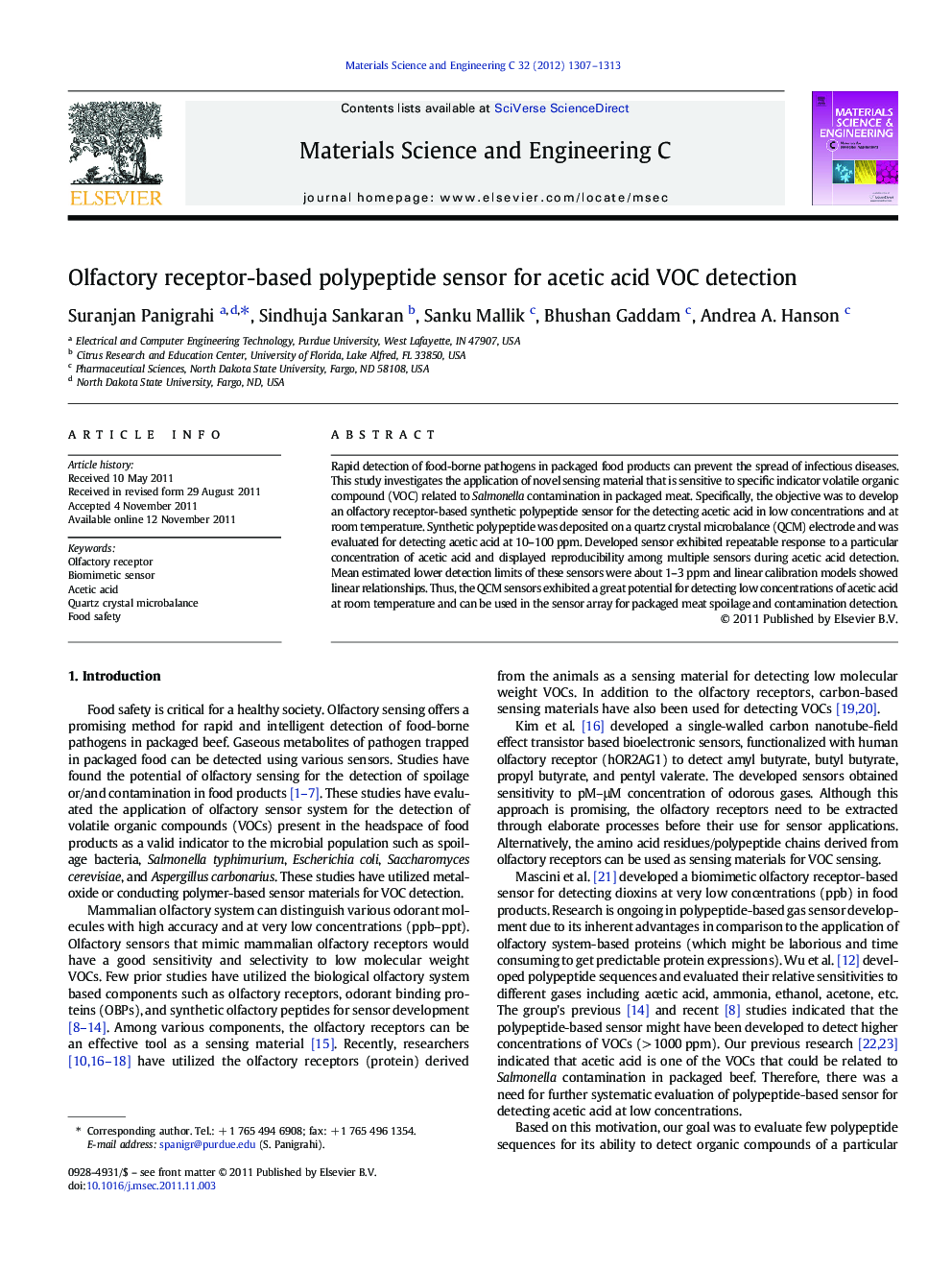| Article ID | Journal | Published Year | Pages | File Type |
|---|---|---|---|---|
| 1428917 | Materials Science and Engineering: C | 2012 | 7 Pages |
Rapid detection of food-borne pathogens in packaged food products can prevent the spread of infectious diseases. This study investigates the application of novel sensing material that is sensitive to specific indicator volatile organic compound (VOC) related to Salmonella contamination in packaged meat. Specifically, the objective was to develop an olfactory receptor-based synthetic polypeptide sensor for the detecting acetic acid in low concentrations and at room temperature. Synthetic polypeptide was deposited on a quartz crystal microbalance (QCM) electrode and was evaluated for detecting acetic acid at 10–100 ppm. Developed sensor exhibited repeatable response to a particular concentration of acetic acid and displayed reproducibility among multiple sensors during acetic acid detection. Mean estimated lower detection limits of these sensors were about 1–3 ppm and linear calibration models showed linear relationships. Thus, the QCM sensors exhibited a great potential for detecting low concentrations of acetic acid at room temperature and can be used in the sensor array for packaged meat spoilage and contamination detection.
► Polypeptide-based QCM sensor were evaluated to mimick mammalian olfactory receptors. ► Sensor showed high sensitivity to low concentrations of acetic acid at room temperature. ► mean estimated lower detection limit for acetic acid sensing range from appox. 2–3.8 ppm. ► Sensors with a specific preparation method exhibited good repeatability and stability up to a period of 1 month.
